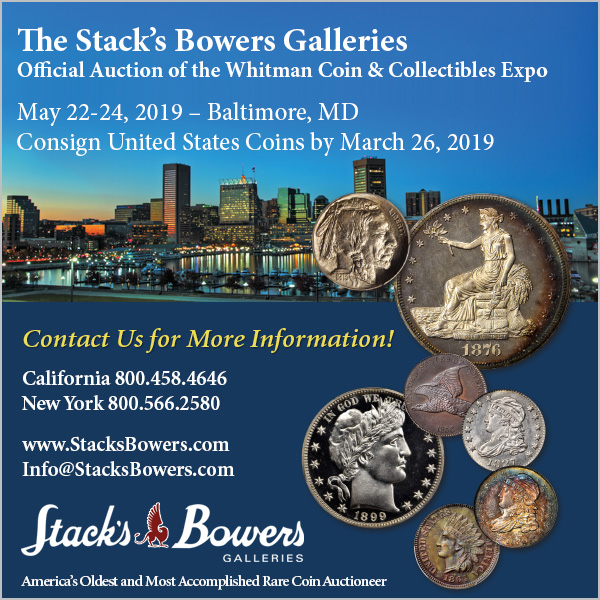
PREV ARTICLE
NEXT ARTICLE
FULL ISSUE
PREV FULL ISSUE
BEP BANKNOTE DESIGNER BRIAN THOMPSONOn March 13, 2019 Quartz published a nice interview with BEP banknote designer Brian Thompson, the first African-American person to design a U.S. banknote. Here's an excerpt. -Editor

Take the $100 bill. Redesigned in 2013 after a spate of high-tech counterfeiting based out of North Korea, the new note features some of the most advanced security design in the world. It cannot be photocopied, reveals some of its secrets only under the infrared and ultraviolet lights of banks and vending machines, and includes a security ribbon allegedly "impossible for even North Korean counterfeiters to replicate." Or, at least, very, very difficult. Behind this note is Brian Thompson, one of the US's three current journeyman banknote designers, as they're officially known. In 2013, he became the first African-American person to design an American banknote, nearly 25 years after he first arrived at the Bureau of Engraving and Printing as an apprentice. His father had previously worked for the bureau, manufacturing the cylinders that pull the "paper" through the presses and turn it into money. Though billions of people have seen, held and used Thompson's artwork, most of them have no idea which invisible hand is behind the subtleties of orange and green on this 6.14 by 2.61 inch canvas. All banknotes are signed, but not by their artists. In an interview with Quartz, Thompson explains how he got to where he is and what makes his chosen canvas so challenging. Quartz: How did you become a banknote designer? I graduated out of high school in '88 and started a seven-year apprenticeship as a banknote designer in '89. At that particular time, there were two apprentices, including me, and six full-fledged journeyman banknote designers when I first started. There were only eight of us then-so it's always been a small number of us. I'm now one of the three banknote designers of the United States. What does a typical day look like? A typical day is a lot of research towards the subject matter that we're thinking about designing, even if there isn't a specific assignment. We're designing to stay ahead of the calendar. Our days are always full of meetings with the Federal Reserve and the Treasury Department. We're getting feedback and information from all of them. Otherwise, we keep our skills sharp by designing miscellaneous products or imagery. We'll draw new subject matter, though I can't give detail on that. Sometimes this is work that no one will ever get to see because it's work that's building toward a final product, or final drawings. We try to do it to just to stay sharp and ahead of the effects of new technology. With the $100 bill, you were the first African-American person to design a banknote. Could you tell me a little about that? I was the the first African-American to design American currency. A reason why that was special was because I worked with the first two African-Americans who did banknote design before they retired and passed. The first African-American banknote designer in the history of the United States was Ronald C. Sharpe, and the second African-American banknote designer was Clarence Holbert. They both trained me. But neither one of them had the opportunity to design American currency because at that time, they weren't making any changes [to US banknotes]. Holbert on the other hand, spent the latter part of his career designing the currency for the country of Eritrea. To read the complete article, see:

Wayne Homren, Editor The Numismatic Bibliomania Society is a non-profit organization promoting numismatic literature. See our web site at coinbooks.org. To submit items for publication in The E-Sylum, write to the Editor at this address: whomren@gmail.com To subscribe go to: https://my.binhost.com/lists/listinfo/esylum All Rights Reserved. NBS Home Page Contact the NBS webmaster 
|